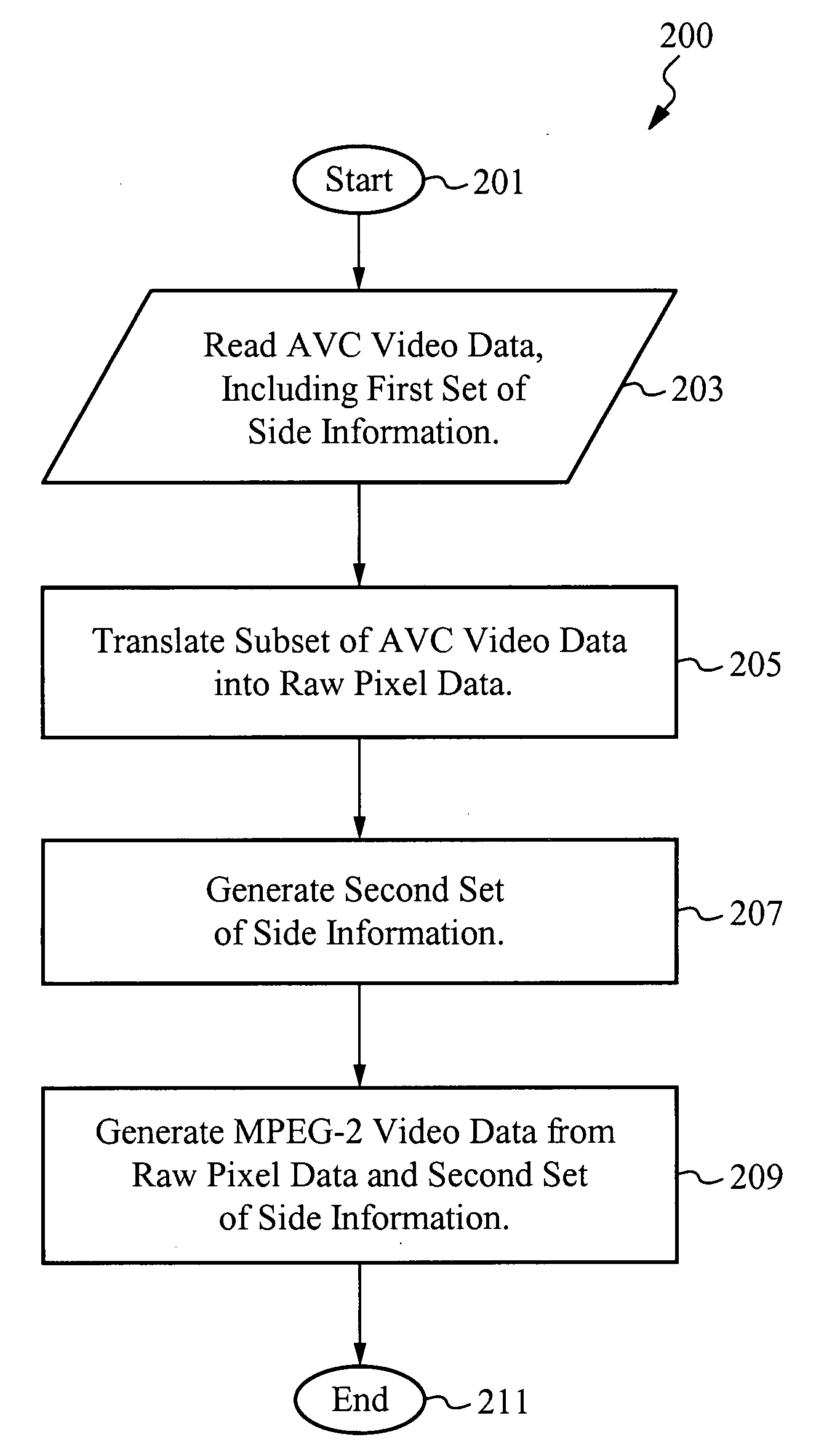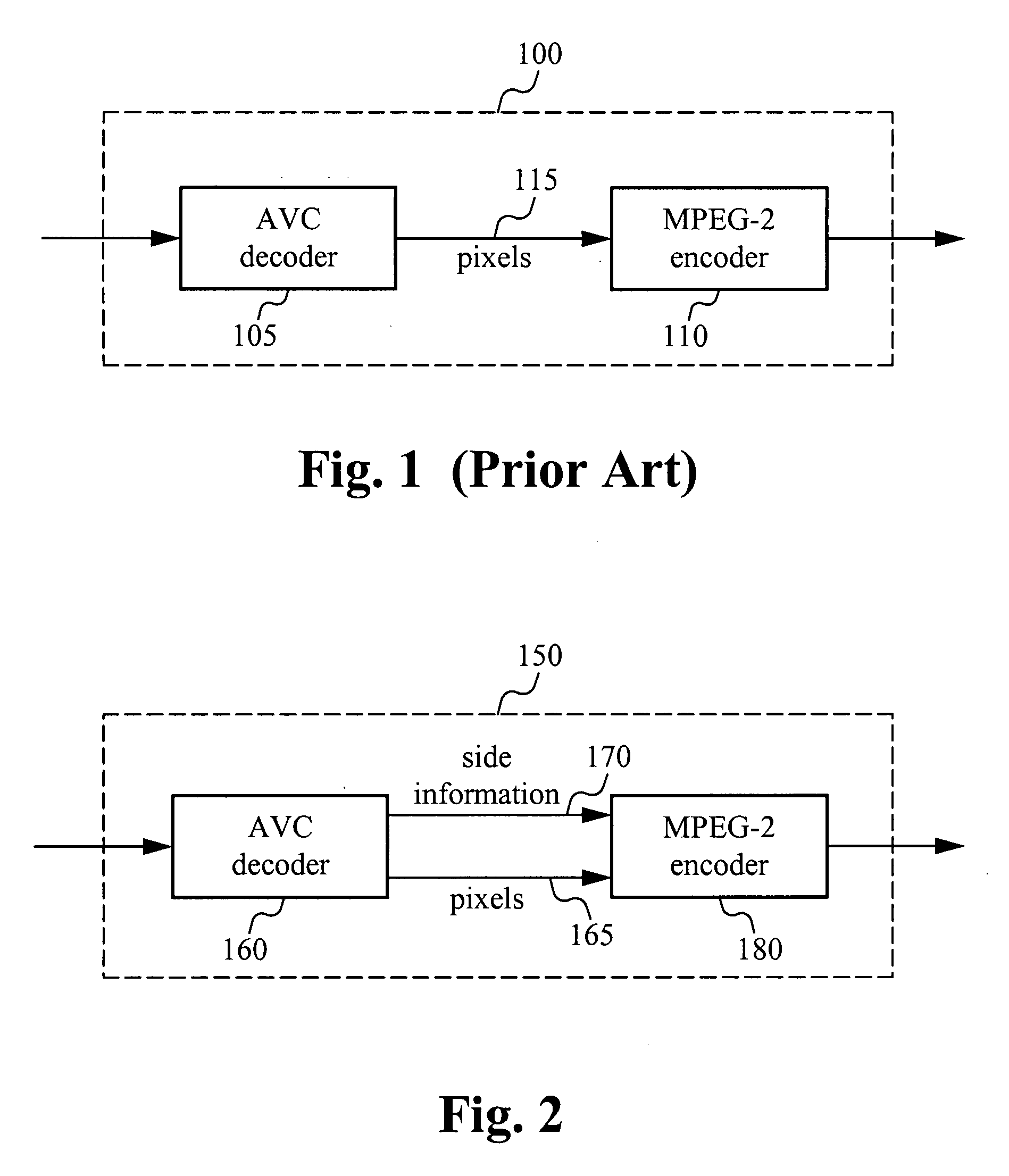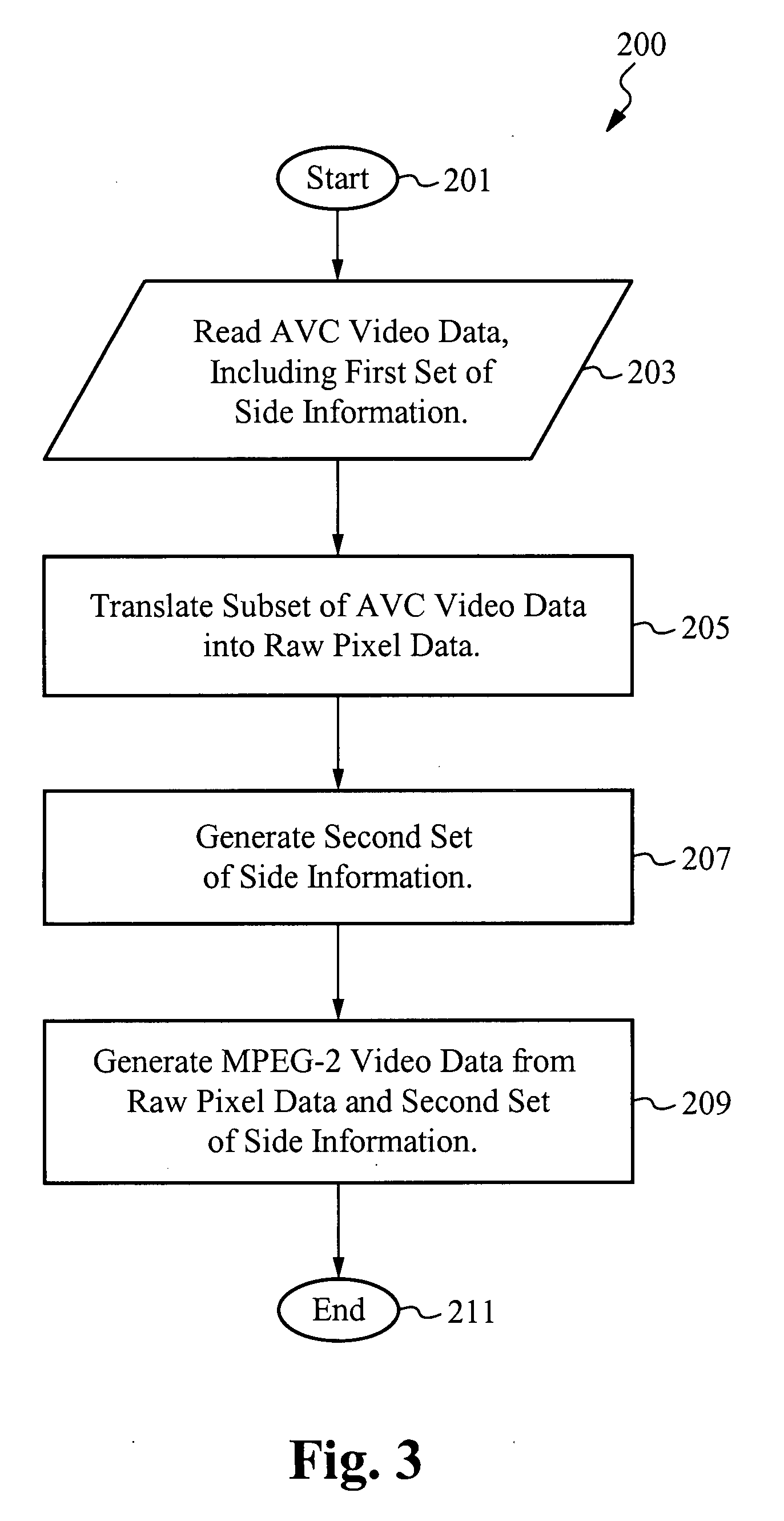System for and method of transcoding video sequences from a first format to a second format
a video sequence and video sequence technology, applied in the field of transcoding, can solve the problems of large raw pixel data block, incompatibility of many of the different video formats, and the system b>, and achieve the effect of simplifying the transcoding and reducing the complexity of the operation
- Summary
- Abstract
- Description
- Claims
- Application Information
AI Technical Summary
Benefits of technology
Problems solved by technology
Method used
Image
Examples
Embodiment Construction
[0057]In accordance with the present invention, video data in a first format are efficiently transcoded into video data in a second format by, among other things, determining which information in the first format is able to be reused in the second format. The information is then reused, saving processing time that would have been needed to transcode that information. In a preferred embodiment, the first video data is AVC (also referred to as MPEG-4 Part 10) video data and the second video data is MPEG-2 video data. Those skilled in the art, however, will appreciate that other video formats are also able to be used in accordance with the present invention.
[0058]Embodiments of the invention are able to be used with AVC sources that are compressed with either field pictures or frame pictures, including macroblock level adaptive field / frame (“MBAFF”) coding for frame pictures. Because of its popularity, MPEG-2 frame pictures, for which prediction may be either field-based or frame-based...
PUM
 Login to View More
Login to View More Abstract
Description
Claims
Application Information
 Login to View More
Login to View More - R&D
- Intellectual Property
- Life Sciences
- Materials
- Tech Scout
- Unparalleled Data Quality
- Higher Quality Content
- 60% Fewer Hallucinations
Browse by: Latest US Patents, China's latest patents, Technical Efficacy Thesaurus, Application Domain, Technology Topic, Popular Technical Reports.
© 2025 PatSnap. All rights reserved.Legal|Privacy policy|Modern Slavery Act Transparency Statement|Sitemap|About US| Contact US: help@patsnap.com



